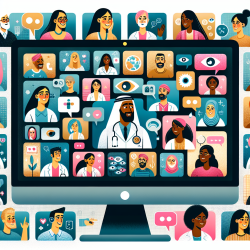Shocking Discoveries! Revolutionize Your Remote Device Clinic with These Expert Tips

The 2023 HRS/EHRA/APHRS/LAHRS Expert Consensus Statement on Practical Management of the Remote Device Clinic offers groundbreaking insights that can transform the way practitioners manage remote device clinics. Here’s how you can leverage these findings to elevate your practice and ensure optimal patient outcomes.
Why Remote Monitoring Matters
Remote monitoring of cardiovascular implantable electronic devices (CIEDs) has shown to significantly impact morbidity and mortality rates. However, the increasing volume of remote monitoring transmissions presents challenges for device clinic staff. This expert consensus statement provides comprehensive guidance on managing these challenges effectively.
Key Takeaways from the Consensus Statement
To optimize your remote device clinic, consider implementing the following recommendations from the consensus statement:
- Staffing: Ensure your clinic is adequately staffed with trained professionals who can handle the volume and complexity of remote monitoring transmissions.
- Clinic Workflows: Develop streamlined workflows to manage remote monitoring efficiently. This includes setting up protocols for routine checks and emergency alerts.
- Patient Education: Educate patients on the importance of remote monitoring and how to use their devices correctly. This can reduce the number of false alerts and improve overall compliance.
- Alert Management: Implement a robust system for managing alerts to ensure timely and appropriate responses. This includes prioritizing alerts based on severity and ensuring that all staff members are aware of their roles and responsibilities.
Communication and Third-Party Resources
Effective communication is crucial for the success of a remote device clinic. The consensus statement recommends:
- Transmission Results: Develop a clear protocol for communicating transmission results to patients and other healthcare providers.
- Third-Party Resources: Utilize third-party resources and services to support your clinic’s operations. This can include outsourcing certain tasks to specialized providers.
- Manufacturer Responsibilities: Ensure that device manufacturers provide adequate support and resources for remote monitoring. This includes regular updates and training for clinic staff.
Programming Concerns
Proper programming of devices is essential for effective remote monitoring. The consensus statement provides guidelines on:
- Device Settings: Ensure that devices are programmed correctly to minimize false alerts and maximize patient safety.
- Regular Updates: Keep device software up-to-date to take advantage of the latest features and improvements.
Gaps in Current Knowledge and Future Research
While the consensus statement provides a comprehensive guide for managing remote device clinics, it also identifies gaps in current knowledge and suggests areas for future research. Practitioners are encouraged to:
- Stay Informed: Keep up-to-date with the latest research and developments in remote monitoring technology.
- Participate in Research: Contribute to ongoing research efforts to improve the understanding and management of remote device clinics.
Conclusion
By implementing the recommendations from the 2023 HRS/EHRA/APHRS/LAHRS Expert Consensus Statement, practitioners can enhance the efficiency and effectiveness of their remote device clinics. This not only improves patient outcomes but also ensures that clinic staff can manage the increasing volume of remote monitoring transmissions effectively.To read the original research paper, please follow this link:
2023 HRS/EHRA/APHRS/LAHRS Expert Consensus Statement on Practical Management of the Remote Device Clinic.
Citation: Ferrick, A. M., Raj, S. R., Deneke, T., Kojodjojo, P., Lopez-Cabanillas, N., Abe, H., et al. (2023). 2023 HRS/EHRA/APHRS/LAHRS Expert Consensus Statement on Practical Management of the Remote Device Clinic. Journal of Arrhythmia, 39(3), 250-302. https://doi.org/10.1002/joa3.12851










